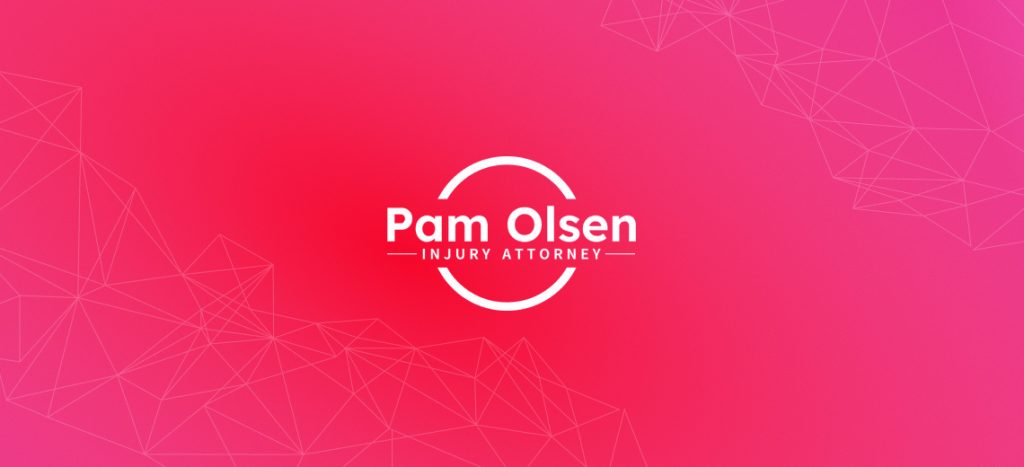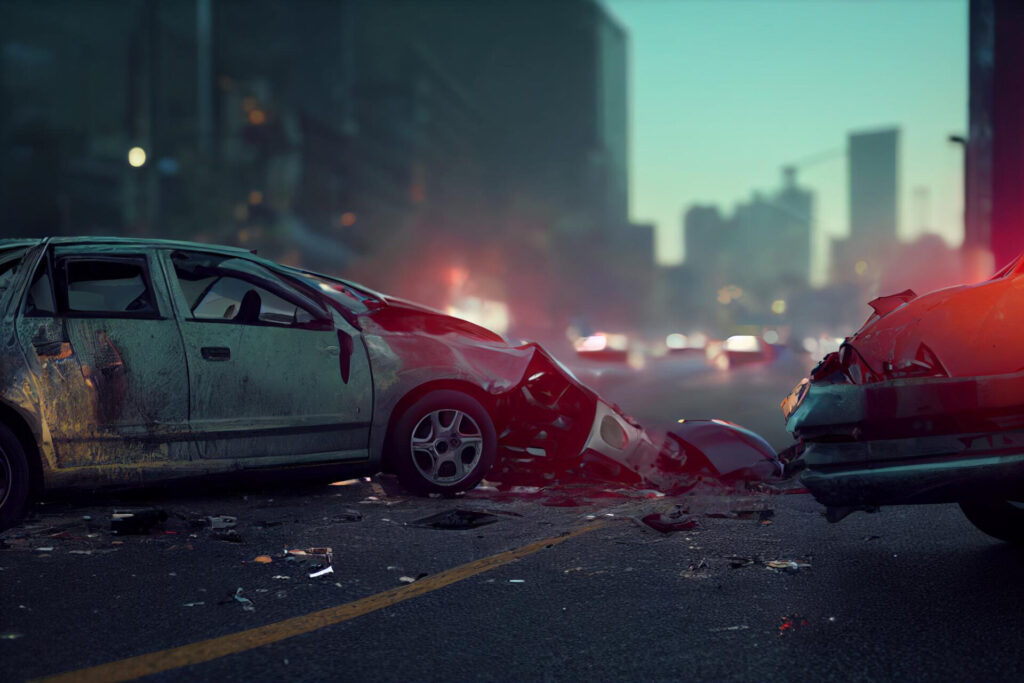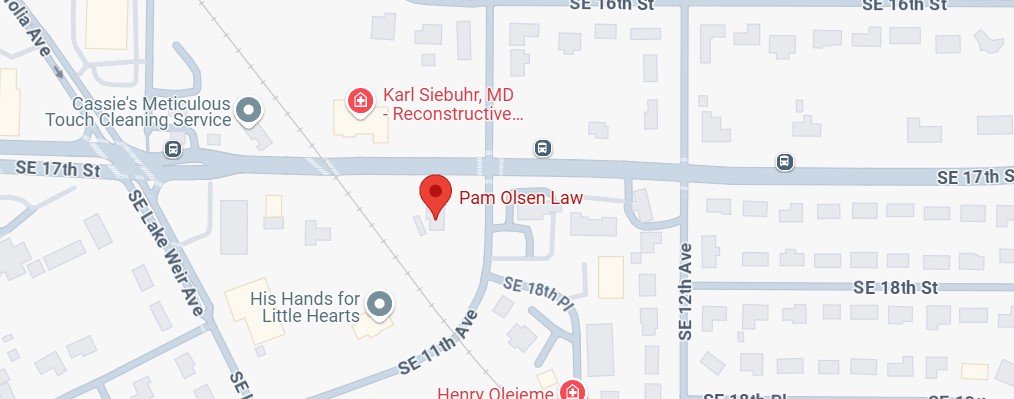Key Takeaways:
- Chain Reaction Accidents Create Complex Multi-Party Liability – Unlike simple two-vehicle crashes, chain reaction accidents involve multiple drivers who may each bear varying degrees of responsibility, making fault determination significantly more complicated than traditional accident cases.
- Florida’s Modified Comparative Negligence Rule Affects Recovery – Under Florida law, injured parties can only recover compensation if they are 50% or less at fault, with their compensation reduced by their percentage of fault, creating complex calculations when multiple parties share responsibility.
- Primary vs. Secondary Impact Analysis Is Critical – Investigators must separately analyze the initial collision that started the chain reaction and each subsequent crash, considering factors like driver reaction time, following distance, speed, and road conditions for each impact.
- Multiple Insurance Companies Complicate Settlement Process – Chain reaction collisions typically involve multiple insurers, each conducting separate investigations and potentially reaching different conclusions about fault, leading to coverage disputes and extended claim processing times.
- Comprehensive Evidence Collection Is Essential – Proving liability requires gathering physical evidence (vehicle damage, skid marks, debris), documentation (police reports, medical records), witness statements, and often expert accident reconstruction analysis to establish the sequence of events.
- Immediate Post-Accident Actions Can Protect Legal Rights – Victims should prioritize safety, seek medical attention even for minor injuries, thoroughly document the scene and all vehicles involved, and gather contact information from all parties and witnesses.
- Professional Legal Representation Is Nearly Always Necessary – The complex nature of multi-vehicle accidents, involving multiple parties, insurance companies, and intricate liability calculations, makes skilled legal representation crucial for protecting rights and obtaining fair compensation.
- Time-Sensitive Evidence Preservation Is Critical – While Florida’s statute of limitations allows four years to file a personal injury claim, evidence can deteriorate and witness memories fade quickly, making immediate legal consultation essential for preserving crucial case elements.
- Compensation May Come From Multiple Sources – Victims in chain reaction accidents may have valid claims against several parties, and an experienced attorney can identify all potentially liable parties and pursue maximum compensation from each applicable insurance policy.
- Common Causes Include Preventable Driver Behaviors – Most chain reaction accidents result from distracted driving, tailgating, speeding, impaired driving, or failure to adjust for weather and road conditions, highlighting the importance of defensive driving practices.
Chain reaction accidents in Ocala can destroy multiple lives in seconds – and leave you fighting multiple insurance companies for months. When three, four, or more vehicles are involved in a single crash, every insurance company tries to blame someone else’s driver, creating a legal nightmare that can drag on for years while your medical bills pile up. Here’s the harsh reality: in multi-vehicle accidents, insurance companies often team up against injured victims, claiming you were partially at fault to reduce their payouts.
Even if you were the innocent victim rear-ended by a distracted driver who caused the whole mess, you could still face claim denials and lowball settlement offers. As an experienced Ocala multi-vehicle accident attorney, I’ve seen how these complex cases can bankrupt families when insurance companies refuse to pay what they owe. With multiple parties pointing fingers at each other, you need someone who knows how to cut through the confusion and hold the right people accountable. Don’t let insurance companies use the chaos of a chain reaction accident to cheat you out of fair compensation
Understanding Chain Reaction Accidents
A chain reaction accident occurs when an initial collision triggers a series of subsequent crashes involving three or more vehicles. These multi car accidents often happen in seconds, creating a domino effect where one collision leads to another, and another, until multiple cars are damaged and numerous parties are injured.
Common causes of chain reaction collisions include:
- Distracted driving – Texting, talking on phones, or other distractions
- Tailgating – Following too closely behind other vehicles
- Speeding – Driving too fast for conditions
- Impaired driving – Operating under the influence of alcohol or drugs
- Weather conditions – Rain, fog, or icy roads that reduce visibility and traction
- Sudden stops – Abrupt braking by lead vehicles
- Road conditions – Debris, potholes, or construction zones
Florida’s busy highways like I-75 through Ocala see their share of these complex accidents. The combination of high traffic volumes, variable speeds, and external factors creates perfect conditions for multi vehicle pileups.
How Do Chain Reaction Accidents Complicate Liability
The complex nature of chain reaction car crash cases stems from several factors that make determining liability far more challenging than typical two-vehicle accidents.
Multiple Drivers and Overlapping Fault
Unlike a simple car accident between two vehicles, chain reaction accidents involve multiple drivers, each potentially contributing to the incident. The initial collision might be caused by one driver’s negligence, but subsequent crashes could result from other drivers’ actions or reactions.
Consider this scenario: Driver A rear-ends Driver B due to distracted driving. Driver B then collides with Driver C, who was following too closely. Meanwhile, Driver D swerves to avoid the wreckage but hits Driver E in the adjacent lane. Determining liability becomes complicated because while Driver A initiated the sequence, other drivers involved may share responsibility for their individual actions.
Primary vs. Secondary Impact Analysis
Chain reaction collisions create multiple points of impact, each requiring separate analysis. The initial collision establishes the primary cause, but subsequent crashes involve different factors:
- Driver reaction time – How quickly each driver responded to the developing situation
- Following distance – Whether drivers maintained safe spacing
- Speed and braking – How effectively drivers attempted to avoid collision
- Road conditions – Environmental factors affecting each driver’s ability to react
Establishing the Sequence of Events
Investigators must piece together the exact sequence of events to determine liability. This process involves:
- Accident reconstruction – Using physical evidence like skid marks, vehicle damage, and debris patterns
- Witness statements – Gathering accounts from other drivers, passengers, and bystanders
- Police reports – Official documentation of the crash scene and initial findings
- Event data recorders – Analyzing data from vehicle computers when available
Car Accident Lawyer: Florida’s Legal Framework
Florida’s unique legal framework adds another layer of complexity to chain reaction car crash cases. Understanding these laws is essential for anyone involved in multi vehicle accidents.
Pure Comparative Negligence Rule
Florida follows a modified comparative negligence system, meaning injured parties can recover compensation only if they are 50% or less at fault. Their compensation is reduced by their percentage of fault. In chain reaction accidents, this rule creates complex calculations when multiple parties share responsibility.
For example, if total damages are $100,000 and a driver is found 30% at fault, they can still recover $70,000. However, if a driver is found more than 50% at fault, they cannot recover any damages. When multiple drivers are involved, determining each party’s percentage of fault becomes crucial for fair compensation.
Legal Obligations and Traffic Laws
Florida law requires drivers to maintain safe following distances, obey speed limits, and exercise reasonable care. In chain reaction collisions, investigators examine whether each driver fulfilled these obligations:
- Following distance – Florida requires sufficient space to stop safely
- Speed limits – Driving too fast for conditions, even within posted limits
- Attention to surroundings – Maintaining awareness of traffic conditions
- Proper response – Taking appropriate action to avoid accidents
Experienced Car Accident Attorney: Proving Liability
Establishing liability in multi car collision cases requires comprehensive evidence gathering and legal expertise. The burden of proof lies with the injured party, making skilled representation essential.
Critical Evidence Collection
Physical Evidence:
- Vehicle damage patterns
- Skid marks and debris
- Road conditions at the crash site
- Traffic signal timing and visibility
Documentation:
- Police reports and citations
- Medical records from all injured parties
- Insurance information from all drivers involved
- Photographs of the accident scene and vehicle damage
Witness Accounts:
- Statements from other drivers
- Passenger testimonies
- Bystander observations
- First responders’ initial assessments
Role of Accident Reconstruction Specialists
Complex chain reaction accidents often require accident reconstruction specialists who can:
- Analyze the sequence of impacts
- Determine vehicle speeds at collision
- Assess driver reaction times
- Identify contributing factors like weather or road conditions
These experts provide crucial testimony that helps establish liability and supports claims for fair compensation.
Chain Reaction Crash: Common Legal Challenges
Multi vehicle accidents present unique legal challenges that require experienced handling.
Multiple Insurance Companies
Chain reaction collisions typically involve multiple insurance companies, each representing different drivers. This creates several complications:
- Conflicting investigations – Each insurer may reach different conclusions about fault
- Coverage disputes – Questions about which policy covers specific damages
- Settlement negotiations – Coordinating agreements among multiple parties
- Claim processing delays – Extended timelines due to complex investigations
Disputed Liability Scenarios
Common disputes in chain reaction cases include:
- Initial cause identification – Determining which driver truly started the sequence
- Contributory negligence – Arguing whether subsequent drivers could have avoided collision
- Shared responsibility – Calculating appropriate fault percentages among multiple parties
- External factors – Considering weather, road conditions, or mechanical failures
Comparative Negligence Calculations
Florida’s comparative negligence laws require precise fault allocation. In a five-car chain reaction accident, fault might be distributed as:
| Driver | Fault Percentage | Reasoning |
| Driver A | 40% | Initiated collision due to distracted driving |
| Driver B | 20% | Following too closely |
| Driver C | 15% | Excessive speed for conditions |
| Driver D | 10% | Failed to maintain proper lookout |
| Driver E | 15% | Improper lane change during emergency |
These calculations directly impact compensation amounts and settlement negotiations.
Multi Vehicle Accidents: Practical Advice for Victims
If you’re involved in a chain reaction collision in Ocala, taking immediate action can protect your legal rights and improve your chances of receiving fair compensation.
Immediate Steps After the Accident
Safety First:
- Move to safety if possible
- Check for injuries among all parties
- Call 911 immediately
- Request medical attention even for minor injuries
Documentation:
- Take photos of all vehicles and the accident scene
- Exchange information with all drivers involved
- Gather witness contact information
- Obtain police report numbers
Medical Attention:
- Seek medical evaluation promptly
- Document all injuries, even if they seem minor
- Keep detailed medical records
- Follow all treatment recommendations
When to Contact a Personal Injury Attorney
Chain reaction accidents almost always require legal assistance due to their complex nature. Contact an experienced car accident attorney when:
- Multiple vehicles are involved
- Serious injuries have occurred
- Insurance companies are disputing liability
- You’re receiving conflicting information about fault
- Settlement offers seem inadequate
How Legal Representation Helps
A skilled Ocala personal injury attorney can:
- Investigate the accident thoroughly
- Gather and preserve crucial evidence
- Negotiate with multiple insurance companies
- Calculate appropriate compensation for all damages
- Represent your interests in court if necessary
Drivers Involved: Recent Ocala Statistics
Recent data shows the complexity of chain reaction accidents in the Ocala area. In 2023, Florida recorded 395,775 total crashes, with rear-end collisions being a significant portion of these incidents.
Notable recent cases include:
- June 2024: A Marion County school bus crash involving multiple vehicles near Ocala
- March 2025: An I-75 chain reaction crash involving an Ocala semi-truck driver and multiple vehicles
These cases highlight the ongoing challenges of determining liability in multi vehicle accidents and the importance of skilled legal representation.
Multiple Vehicles: Compensation Considerations
Chain reaction accidents often result in significant damages across multiple categories:
Economic Damages
- Medical expenses – Emergency treatment, surgery, rehabilitation
- Lost wages – Income lost due to inability to work
- Property damage – Vehicle repair or replacement costs
- Future medical costs – Ongoing treatment needs
Non-Economic Damages
- Pain and suffering – Physical and emotional toll of injuries
- Loss of quality of life – Impact on daily activities and relationships
- Emotional distress – Psychological effects of the traumatic event
Calculating Total Compensation
In multi vehicle accidents, victims may have claims against multiple parties. An experienced attorney can identify all potentially liable parties and pursue maximum compensation from each applicable insurance policy.
Conclusion
Chain reaction accidents complicate liability through their complex causation patterns, multiple responsible parties, and intricate legal requirements. Florida’s comparative negligence laws add another layer of complexity, requiring precise fault allocation among all drivers involved.
If you’ve been injured in a multi car collision in Ocala, don’t attempt to navigate these complexities alone. The involvement of multiple vehicles, drivers, and insurance companies creates challenges that require skilled legal representation. An experienced car crash lawyer in Ocala can protect your rights, gather crucial evidence, and fight for the fair compensation you deserve.
Remember, Florida’s statute of limitations gives you four years to file a personal injury claim, but evidence preservation and witness memories fade over time. Contact a qualified Ocala personal injury attorney immediately to ensure your case receives the attention and expertise it requires.
You don’t have to face the aftermath of a chain reaction accident alone. With proper legal support, you can focus on your recovery while skilled professionals handle the complex legal proceedings necessary to secure your financial future.
 CALL US NOW
CALL US NOW




